 W
WHorace Gundry Alexander was an English Quaker teacher and writer, pacifist and ornithologist. He was the youngest of four sons of Joseph Gundry Alexander (1848–1918), two other sons being the ornithologists Wilfred Backhouse Alexander and Christopher James Alexander (1887–1917). He was a friend of Mahatma Gandhi.
 W
WSir David Frederick Attenborough is an English broadcaster and natural historian. He is best known for writing and presenting, in conjunction with the BBC Natural History Unit, the nine natural history documentary series forming the Life collection that together constitute a comprehensive survey of animal and plant life on Earth. He is a former senior manager at the BBC, having served as controller of BBC Two and director of programming for BBC Television in the 1960s and 1970s. He is the only person to have won BAFTAs for programmes in each of black and white, colour, HD, 3D and 4K. In 2018 and 2019, he received Primetime Emmy Awards for Outstanding Narrator. He considers his 2020 documentary film, David Attenborough: A Life On Our Planet, his personal witness statement of his life and the future.
 W
WRichard St. Barbe Baker, Hon. LL.D. F.I.A.L., For.Dip.Cantab., ACF was an English biologist and botanist, environmental activist and author, who contributed greatly to worldwide reforestation efforts. As a leader, he founded an organisation, Men of the Trees, still active today as the International Tree Foundation, whose many chapters carry out reforestation internationally.
 W
WHerbert Ernest Bates, better known as H. E. Bates, was an English writer and author. His best-known works include Love for Lydia, The Darling Buds of May, and My Uncle Silas.
 W
WErnest Bell was an English author and publisher, animal rights activist, animal welfare campaigner, humanitarian and vegetarian.
 W
WThomas Belt, an English geologist and naturalist, was born at Newcastle-on-Tyne in 1832, and educated in that city. He is remembered for his work on the geology of gold bearing minerals, glacial geology, and for his description of the mutualistic relationship between certain bullthorn Acacia species and their Pseudomyrmex ants.
 W
WHumphry John Moule Bowen was a British botanist and chemist.
 W
WEdith Carrington was a prominent English animal rights activist and promoter of vegetarianism. She was for sometime an artist, but began to write books on animals from 1889. She was a vocal opponent of Eleanor Anne Ormerod's campaign seeking the extermination of the house sparrow and was an anti-vivisectionist.
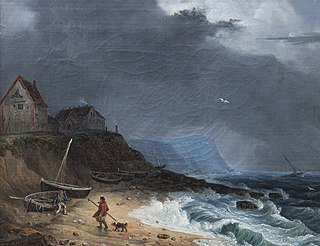 W
WCharles Catton the younger was an English slave owner, topographical artist, illustrator and theatrical scene-painter.
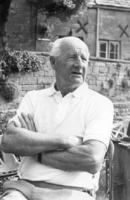 W
WJohn Stewart Collis (1900–1984) was an Irish biographer, rural author, and pioneer of the ecology movement. He is known for his book The Worm Forgives the Plough based on his wartime experience working in the Land Army in the Second World War.
 W
WHugh Bamford Cott was a British zoologist, an authority on both natural and military camouflage, and a scientific illustrator and photographer. Many of his field studies took place in Africa, where he was especially interested in the Nile crocodile, the evolution of pattern and colour in animals. During the Second World War, Cott worked as a camouflage expert for the British Army and helped to influence War Office policy on camouflage. His book Adaptive Coloration in Animals (1940), popular among serving soldiers, was the major textbook on camouflage in zoology of the twentieth century. After the war, he became a Fellow of Selwyn College, Cambridge. As a Fellow of the Zoological Society of London, he undertook expeditions to Africa and the Amazon to collect specimens, mainly reptiles and amphibians.
 W
WThomas Alfred Coward, MSc, FZS, FRES, MBOU, was an English ornithologist and an amateur astronomer. He wrote extensively on natural history, local history and Cheshire.
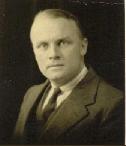 W
WEric Fitch Daglish was a British engraver and author. He illustrated classics by Izaak Walton, Henry David Thoreau, Gilbert White and W. H. Hudson with exquisite wood engravings. Daglish also authored a number of natural history and wildlife/countryside books. Many of his books are now out of print but the originals are sold over the Internet.
 W
WJoseph Morewood Dowsett F.R.G.S., F.Z.S. was an English big-game hunter, naturalist and writer. From the 1930s, Dowsett took interest in animal welfare.
 W
WHugh Falkus was a British writer, filmmaker and presenter, World War II pilot and angler. In an extremely varied career, he is perhaps best known for his seminal books on angling, particularly salmon and sea trout fishing; however, he was also a noted filmmaker and broadcaster for the BBC.
 W
WNicholas Hammond is an English ornithologist and author, and a former director of the Wildlife Trust for Bedfordshire, Cambridgeshire and Northamptonshire. He was editor of the Royal Society for the Protection of Birds' Birds magazine, and later its director of communications. He has written a number of books on, and speaks about, wildlife art.
 W
WJames Shirley Hibberd was one of the most popular and successful gardening writers of the Victorian era. He was a best-selling editor of three gardening magazines, including Amateur Gardening, the only 19th-century gardening magazine still being published today. He wrote over a dozen books on gardening and several more on natural history and related subjects. He promoted town gardening, aquariums, bee-keeping, vegetarianism, water recycling, environmental conservation and the prevention of cruelty to animals and birds, all before they were taken up as 'causes' in the twentieth century. Most important of all, he taught and promoted amateur gardening, before it was acceptable among the gardening establishment, and helped to found the whole consumer industry in amateur gardening that we have today.
 W
WWilliam Howitt, was a prolific English writer on history and other subjects. Howitt Primary Community School in Heanor, Derbyshire, is named after him and his wife.
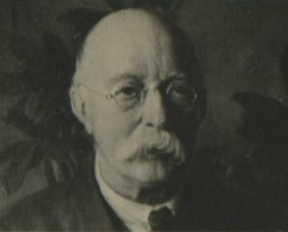 W
WEdward Solomon Hyams was a British gardener, historian, novelist and writer. He is known for his writings as a French scholar and socialist historian.
 W
WJohn Richard Jefferies was an English nature writer, noted for his depiction of English rural life in essays, books of natural history, and novels. His childhood on a small Wiltshire farm had a great influence on him and provides the background to all his major works of fiction.
 W
WRichard Kearton FZS, FRPS and Cherry Kearton, brothers, were a pair of British naturalists and some of the world's earliest wildlife photographers. They developed innovative methods to photograph animals in the wild and in 1895 published the first natural history book to be entirely illustrated by wild photographs. Richard was a made a Fellow of the Zoological Society of London and Royal Photographic Society. Cherry later became a wildlife and news filmmaker, and friend to Theodore Roosevelt. The Royal Geographical Society created the Cherry Kearton Medal and Award in his honour.
 W
WRichard Kearton FZS, FRPS and Cherry Kearton, brothers, were a pair of British naturalists and some of the world's earliest wildlife photographers. They developed innovative methods to photograph animals in the wild and in 1895 published the first natural history book to be entirely illustrated by wild photographs. Richard was a made a Fellow of the Zoological Society of London and Royal Photographic Society. Cherry later became a wildlife and news filmmaker, and friend to Theodore Roosevelt. The Royal Geographical Society created the Cherry Kearton Medal and Award in his honour.
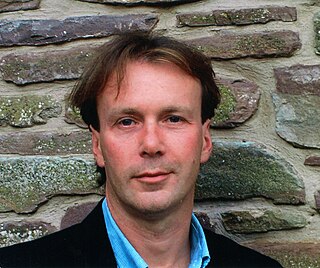 W
WJohn Lewis-Stempel is an English farmer, writer, and Sunday Times Top 5 best selling author. He was born in Herefordshire, where his family have lived for over 700 years.
 W
WHelen Macdonald is an English writer, naturalist, and an Affiliated Research Scholar at the University of Cambridge Department of History and Philosophy of Science. She is best known as the author of H is for Hawk, which won the 2014 Samuel Johnson Prize and Costa Book Award. In 2016, it also won the Prix du Meilleur Livre Étranger in France.
 W
WHarold John Massingham (25 March 1888 – 22 August 1952) was a prolific British writer on ruralism, matters to do with the countryside and agriculture. He was also a published poet.
 W
WStephen Moss is an English natural historian, birder, author, and television producer.
 W
WWilliam Edgar Oddie is an English writer, comedian, composer, musician, artist, birder, conservationist, television presenter and actor. He was a member of comedy trio The Goodies.
 W
WArthur Victor Oglesby was a British writer, photographer, filmmaker, broadcaster and fisherman. He was best known for his books on salmon fishing.
 W
WAnne Pratt was a botanical and ornithological illustrator and author from Strood, Kent.
 W
WEdward James Ravenscroft (1816–1890), was the author of The Pinetum Britannicum (1884), a monumental three-volume work that describes and depicts exotic coniferous trees cultivated in Britain in the 19th century, when they were at the height of popularity.
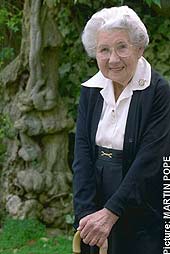 W
WStella Ross-Craig was an English illustrator best known as a prolific illustrator of native flora.
 W
WFrancis Sydney Smythe, better known as Frank Smythe or F. S. Smythe, was an English mountaineer, author, photographer and botanist. He is best remembered for his mountaineering in the Alps as well as in the Himalayas, where he identified a region that he named the "Valley of Flowers", now a protected park. His ascents include two new routes on the Brenva Face of Mont Blanc, Kamet, and attempts on Kangchenjunga and Mount Everest in the 1930s. It was said that he had a tendency for irascibility, something some of his mountaineering contemporaries said "decreased with altitude".
 W
WEdward Step FLS was the author of many popular and specialist books on various aspects of nature. His many works on botany, zoology and mycology were published between 1894 and (posthumously) 1941. Some of his books on flowers were illustrated by his daughter, Mabel Emily Step, including the 1905 pocket guide entitled Wayside and Woodland Blossoms. He also contributed to the periodical Science-Gossip: An Illustrated Monthly Record of Nature, Country Lore & Applied Science.
 W
WGilbert White FRS was a "parson-naturalist", a pioneering English naturalist, ecologist and ornithologist. He is best known for his Natural History and Antiquities of Selborne.
 W
WJohn George Wood, or Rev J. G. Wood,, was an English writer who popularised natural history with his writings.